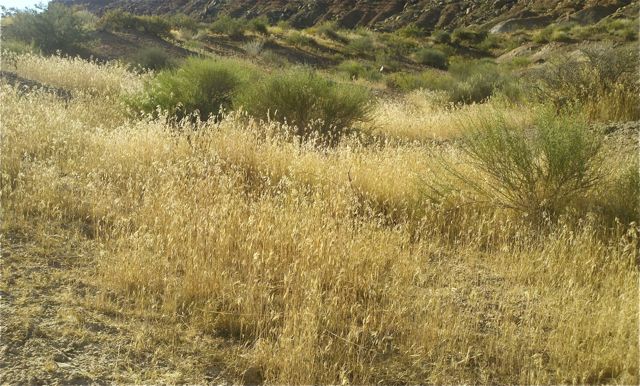ST. GEORGE — Traditionally the wildfire season in Southern Utah seems to die down in September as warmer, dry temperatures give way to cooler fall weather preceded by monsoonal rains. However, due to the late, wet winter that left many parts of the region saturated, the fire season started late and is anticipated to drag on longer than usual.

“We’re kind of a month behind,” said Mike Melton, area fire manager for the Utah Division of Forestry, Fire and State Lands.
The Utah fire season unofficially runs from May through October, though under state law it starts June 1 and runs through Oct. 31.
“There’s plenty of fire activity,” said Jason Curry, public information officer for the Utah Division of Forestry, Fire and State Lands.
According the UtahFireInfo website, there are currently six wildfires ranging in size between 130-3,900 acres in size burning across the state as of Friday morning, including the Neck Fire, which was reported Thursday evening north of Cedar City. Firefighters in northern Utah also recently dealt with the Gun Range Fire in Bountiful that triggered evacuations and destroyed a handful of homes.
Previous to Thursday’s Neck Fire, Southwest Utah’s fire season has been rather tame by comparison, with only small fires popping up here and there, Santa Clara-Ivins Fire Chief Randy Hancey said.
The peak time for fire season is usually late July and August, Hancey said, with the fires tapering off in September and October bringing an end to the season for another year.

However, the weather hasn’t exactly been cooperative this year, as the monsoonal rains that typically occur across July and August have been sparse. The lack of moisture has added to the increasingly dry state of vegetation ripe for ignition.
On the other hand, the lack of the rains means not as many fires have been triggered by summer lightning as there usual are, said Nick Howell, fire mitigation and education specialist for the Bureau of Land Management.
There does appear to be cooler weather on the horizon with a cold front coming in, Howell said, but whatever cooler temperatures it brings may only be short term.
“Many agencies are wondering when a season-ending event will take place,” he said, adding that one of the biggest worries for fire managers is the combustible sage brush and grass that covers the lower elevations across Washington and Iron counties.
Among that is cheatgrass, an invasive plant that is highly flammable and produces heavy flames when ignited.

Curry said people can help avoid causing wildfires by being aware of their equipment and vehicle use, especially concerning trailers.
“People need to make sure their trailer chains are secure and also be careful with their brakes and exhaust,” he said.
Sparks that fly from loose chains dragged along the road are known to cause roadside fires along heavy-traffic corridors.
Other precautions include making sure campfires are put out before leaving them. Fire managers also stress that campfires only be lit in areas where they are permitted, like fire pits and improved campgrounds, not out in the wilderness.
Fire managers also recommend that homes built in what is known as wildland-urban interface – where human habitation mixes with the wilderness – should have adequate “defensible space.” Defensible space is an area around a home free of combustible materials and that provides a barrier between the home and a possible wildfire. It also provides a space where firefighters can safety combat a blaze if it approaches the home.
During a recent Washington County Commission meeting, Hurricane Valley Fire Chief Tom Kuhlmann said they are asking people to remain diligent.
“If they have to use fire, use it wisely, because we’re looking at the fire season going late into fall.”
State and federal-issued fire restrictions also remain in effect until further notice.
Copyright St. George News, SaintGeorgeUtah.com LLC, 2019, all rights reserved.